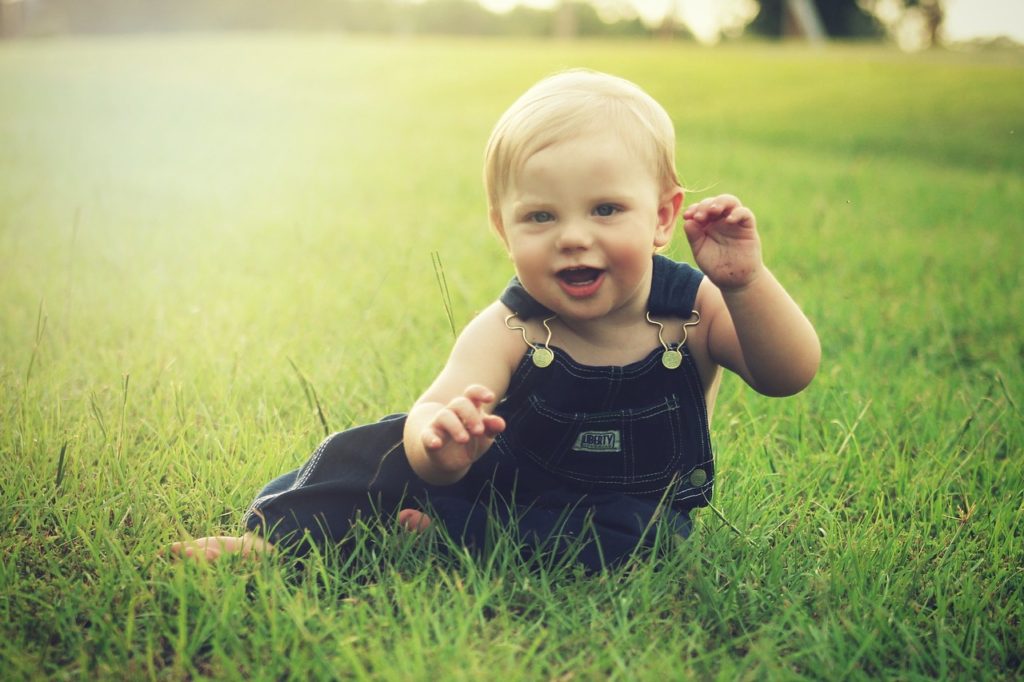
As a parent, you’ve no doubt noticed that your child is never happiest than when he or she is running, bouncing, spinning, or rolling around with abandon. It’s certainly true that an active child is a happy child, and that there’s very little you can do to calm a toddler once they’ve decided on a mad five minutes.
However, did you know that keeping your child active could be about so much more than encouraging happiness? An active child is one that is learning through play; a child that is gaining independence and confidence via movement, and beginning to understand the world around them by way of exploration.
We’ve compiled a list of some of the best ways to encourage activity in your child and to strengthen the bond that you will have created as parent and child. Each stage of your child’s life will bring new challenges, and bigger rewards; you simply need to know how to engage with your child and make the most of the moment.
Newborn
From the moment they’re born children begin a journey of discovery, learning about the world around them and their place within your family, as well as seeking stimulation, and developing a sense of self. Now is the best time to get active with the best baby gym available; to create that bond upon which both you and your little one will thrive.
Baby gyms, activity mats, sensory toys, musical instruments, and bold, colorful patterns are incredibly effective when introduced at this young age, and can encourage your child to stretch, look around, grab, and grasp.
Baby gyms provide a mini-workout of their own, while bells, rattles, and toys that can be attached to baby’s wrists or ankles can help them to discover hands and feet – and what they are intended for. Tummy time and hours spent kicking on the floor, will inspire your baby to wriggle and giggle, and promote health and happiness from the earliest age.
Sitting up and rolling over
As soon as your baby is able to hold his or her head, and to sit either aided or unaided, you should begin to introduce a series of sensory toys that will encourage reaching, grasping, and tentative crawling, such as rattles, brightly-colored soft toys, musical toys, and those that can be pushed and pulled.
The world seems a far more interesting place now that they’ve discovered movement, after all. That first time your baby rolls over is likely to be a very special one, although it signals a whole new chapter of his or her development; your baby is preparing to crawl and to gain a little more independence.
The happiest babies are those that are allowed to venture a little further – with you at their side for reassurance. Spend as much time on the floor with your little one as you can, encouraging those first crawls.
Learning to crawl
Uh-oh, your baby has discovered the joys of crawling, or bottom-shuffling, and is now making his or her way around your living room floor with ease and confidence. While you may feel as though an extra pair of eyes, and hands, would come in handy right now, it’s important to remember that your child’s increased activity is an excellent sign in terms of development.
Your baby may well be content exploring this whole new world, but encourage play and engagement with push and pull-along toys, ride-on playthings, and walking frames that will inspire your baby to stand up and walk.
There’s a good chance you’ve been reading and singing with your baby for some time now, but step things up a gear. Song and dance time, action rhymes and musical interludes will improve your baby’s self-esteem, coordination, and balance, as well as introduce a sense of rhythm, even at this early age.
Standing, walking and beyond
Once your child has mastered sitting, standing, cruising, and bopping along to music, there’s only one way left for him or her to go; forwards. Walking is a huge deal for children and parents alike, and marks a whole new stage of development for your little one.
You’re unlikely to have seen your child quite so happy as when they first master stepping one foot in front of the other, and it’s essential to encourage each and every attempt until they get it right; much like riding a bike, children learn best with an adult by their side carefully, and slowly letting go and as they gather their balance.
Once your child is walking little will get in their way, and now is a fantastic time to introduce outdoor games such as soccer, catch, basketball and bicycling.
An active child is a happy child; not only does activity and engagement with the world encourage vital developmental stages to occur, it can also strengthen the bond between parent and child, and instill a sense of happiness like nothing else.